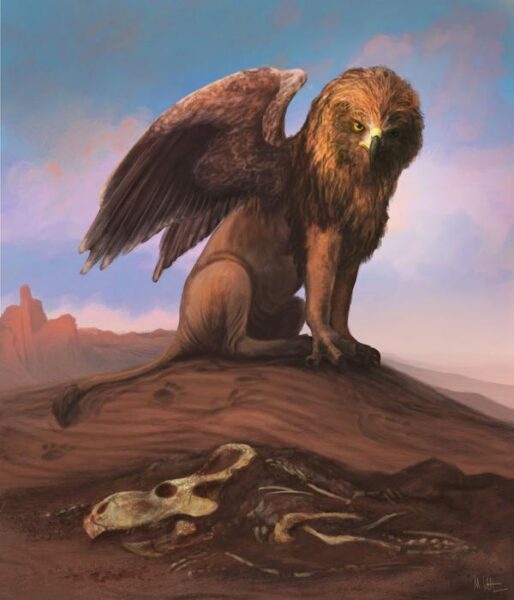A long-held belief linking dinosaur fossils to the mythical griffin has been called into question by new research. Palaeontologists from the University of Portsmouth have scrutinized the popular claim that ancient Protoceratops remains inspired the legendary creature, finding little evidence to support this widely circulated theory.
The griffin, a mythological beast with the head and wings of an eagle atop a lion’s body, has captivated imaginations for millennia. Its origins in art can be traced back to ancient Egypt and the Middle East, with popularity surging in Greece around the 8th century BC. For over three decades, folklorist Adrienne Mayor has promoted the idea that Protoceratops fossils discovered by ancient gold prospectors in Central Asia gave rise to griffin lore.
Fossil Evidence Falls Short
Dr. Mark Witton and Richard Hing, the study’s authors, examined historical records, fossil distributions, and classical sources to evaluate the proposed dinosaur-griffin connection. Their findings suggest that the link is tenuous at best.
Protoceratops, a small horned dinosaur that lived 75-71 million years ago in Mongolia and northern China, shares few similarities with the griffin beyond having four legs and a beak. The researchers point out that Protoceratops fossils are found far from ancient gold mining sites, making chance discoveries by prospectors unlikely.
Dr. Witton explained, “There is an assumption that dinosaur skeletons are discovered half-exposed, lying around almost like the remains of recently-deceased animals. But generally speaking, just a fraction of an eroding dinosaur skeleton will be visible to the naked eye, unnoticed to all except for sharp-eyed fossil hunters.”
Mythical Origins More Plausible
The study also highlights discrepancies between the geographic spread of griffin art and the proposed fossil-based origin story. No clear references to Protoceratops remains exist in ancient literature, further weakening the connection.
“Everything about griffin origins is consistent with their traditional interpretation as imaginary beasts, just as their appearance is entirely explained by them being chimaeras of big cats and raptorial birds,” Dr. Witton added.
While the researchers acknowledge the cultural importance of fossils throughout human history, they stress the need to distinguish between evidence-based fossil folklore and speculative connections.
Richard Hing emphasized, “It is important to distinguish between fossil folklore with a factual basis — that is, connections between fossils and myth evidenced by archaeological discoveries or compelling references in literature and artwork — and speculated connections based on intuition.”
The study, published in Interdisciplinary Science Reviews, serves as a reminder that not all mythological creatures require fossil-based explanations. By focusing on factual geomyths, researchers can gain valuable insights into the complex relationship between human culture and the fossil record.
If our reporting has informed or inspired you, please consider making a donation. Every contribution, no matter the size, empowers us to continue delivering accurate, engaging, and trustworthy science and medical news. Independent journalism requires time, effort, and resources—your support ensures we can keep uncovering the stories that matter most to you.
Join us in making knowledge accessible and impactful. Thank you for standing with us!

